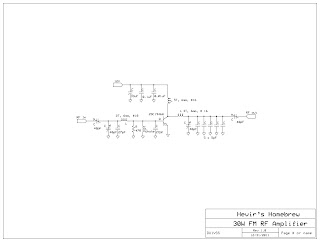In order to adjust the power output of the IC-2200H transceiver it must come to "Adjustment Mode" and we need also the adjustment jig. The jig itself is made of 22K resistor connected to Pin7 and Pin2 of the RJ45 connector. When the jig is inserted to the microphone jack, "Adjustment Mode" can be initialized by holding the keys "SET" and "MONI" simultaneously while pressing "POWER ON"
The transceiver screen should look like this;
Adjustment items are displayed in the lower right corner of the LCD and these can be toggled by pressing the "BLANK OPT" or the "V/MHZ" keys. When the transceiver is on "Adjustment Mode" you can now remove the jig and reconnect the microphone. Please refer to the IC-2200H service manual for more details on the adjustment parameters. Note that the power output of the IC-2200H can be adjusted to 85W max by setting the PO parameter in the "Adjustment Mode". When done please perform a "Master Reset" to take effect the changes made on the transceiver. ---73 de du1vss
Attachment: 2200H.pdf










